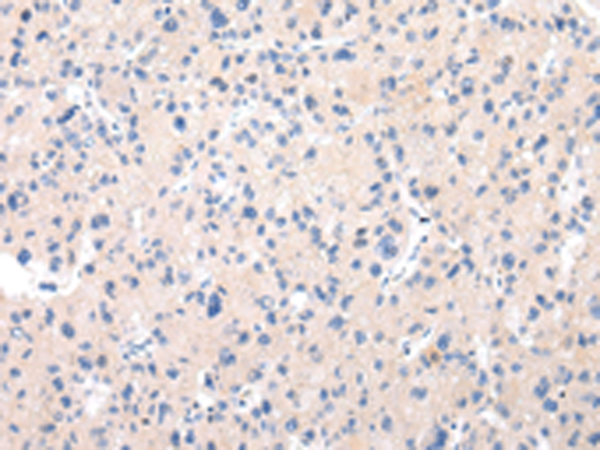
| WB | 咨询技术 | Human,Mouse,Rat |
| IF | 咨询技术 | Human,Mouse,Rat |
| IHC | 1/25-1/100 | Human,Mouse,Rat |
| ICC | 技术咨询 | Human,Mouse,Rat |
| FCM | 咨询技术 | Human,Mouse,Rat |
| Elisa | 1/2000-1/5000 | Human,Mouse,Rat |
| Aliases | MG2 |
| Host/Isotype | Rabbit IgG |
| Antibody Type | Primary antibody |
| Storage | Store at 4°C short term. Aliquot and store at -20°C long term. Avoid freeze/thaw cycles. |
| Species Reactivity | Human |
| Immunogen | Synthetic peptide of human MUC7 |
| Formulation | Purified antibody in PBS with 0.05% sodium azide and 50% glycerol. |
+ +
以下是3篇关于MUC7抗体的代表性文献及其摘要概括:
1. **"Structural and functional aspects of the human low-molecular-weight mucin (MUC7)"**
Biesbrock, A.R., et al. (1997)
该研究解析了MUC7蛋白的核心结构,证明其羧基末端具有抗菌活性,并开发了特异性抗体用于检测其在唾液中的分布及与微生物的相互作用。
2. **"Antimicrobial activity of human salivary mucin-derived peptide constructs against oral pathogens"**
Liu, B., et al. (2000)
通过MUC7抗体定位其功能域,发现其裂解生成的KSA肽段具有广谱抗菌性,为开发基于MUC7抗体的口腔感染诊断或抗菌疗法提供依据。
3. **"Role of glycosylation in the antimicrobial activity of human salivary mucin MUC7"**
Gururaja, T.L., et al. (1999)
利用抗体研究MUC7糖基化修饰对抗菌功能的影响,发现特定糖链缺失会降低其抑制白色念珠菌黏附的作用,提示抗体可用于监测MUC7的翻译后修饰状态。
4. **"MUC7 expression patterns in oral squamous cell carcinoma"**
Dhanisha, S.S., et al. (2018)
通过免疫组化(MUC7抗体)发现其在口腔癌细胞中表达异常下调,提示MUC7可能作为肿瘤抑制因子,相关抗体可用于癌症标志物研究。
MUC7. a member of the mucin family, is a low-molecular-weight, secreted glycoprotein predominantly expressed in salivary glands and mucosal surfaces of the respiratory tract. It plays critical roles in lubrication, microbial defense, and maintaining mucosal barrier integrity by forming a protective gel-like layer. The MUC7 protein contains tandem repeats rich in serine and threonine residues, which undergo extensive O-glycosylation, contributing to its structural and functional diversity.
Antibodies targeting MUC7 are valuable tools for studying its expression, localization, and interactions in physiological and pathological contexts. They are widely used in immunohistochemistry, ELISA, and Western blotting to investigate MUC7's involvement in diseases such as chronic obstructive pulmonary disease (COPD), asthma, oral infections, and cancers (e.g., salivary gland tumors). Research suggests altered MUC7 expression or glycosylation patterns may correlate with disease progression, microbial adhesion, or immune evasion.
Additionally, MUC7 antibodies hold diagnostic potential, as salivary MUC7 levels are explored as biomarkers for oral and systemic conditions. Therapeutic applications, though nascent, include targeting MUC7-pathogen interactions to prevent infections. Challenges remain in ensuring antibody specificity due to MUC7's glycosylation variability and homology with other mucins. Ongoing studies aim to refine antibody-based assays and explore clinical relevance in personalized medicine.
×